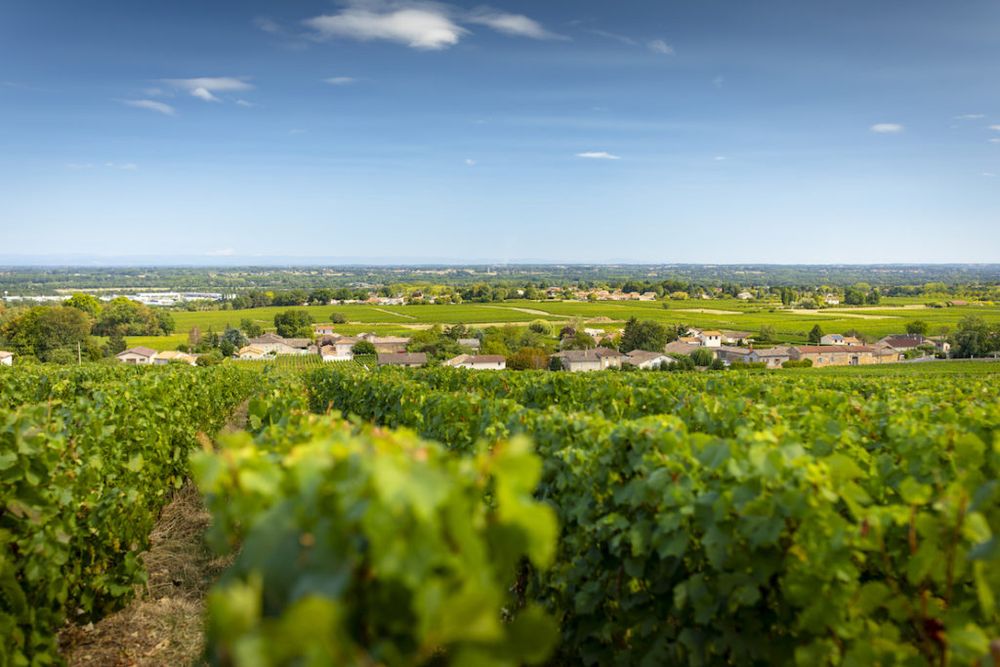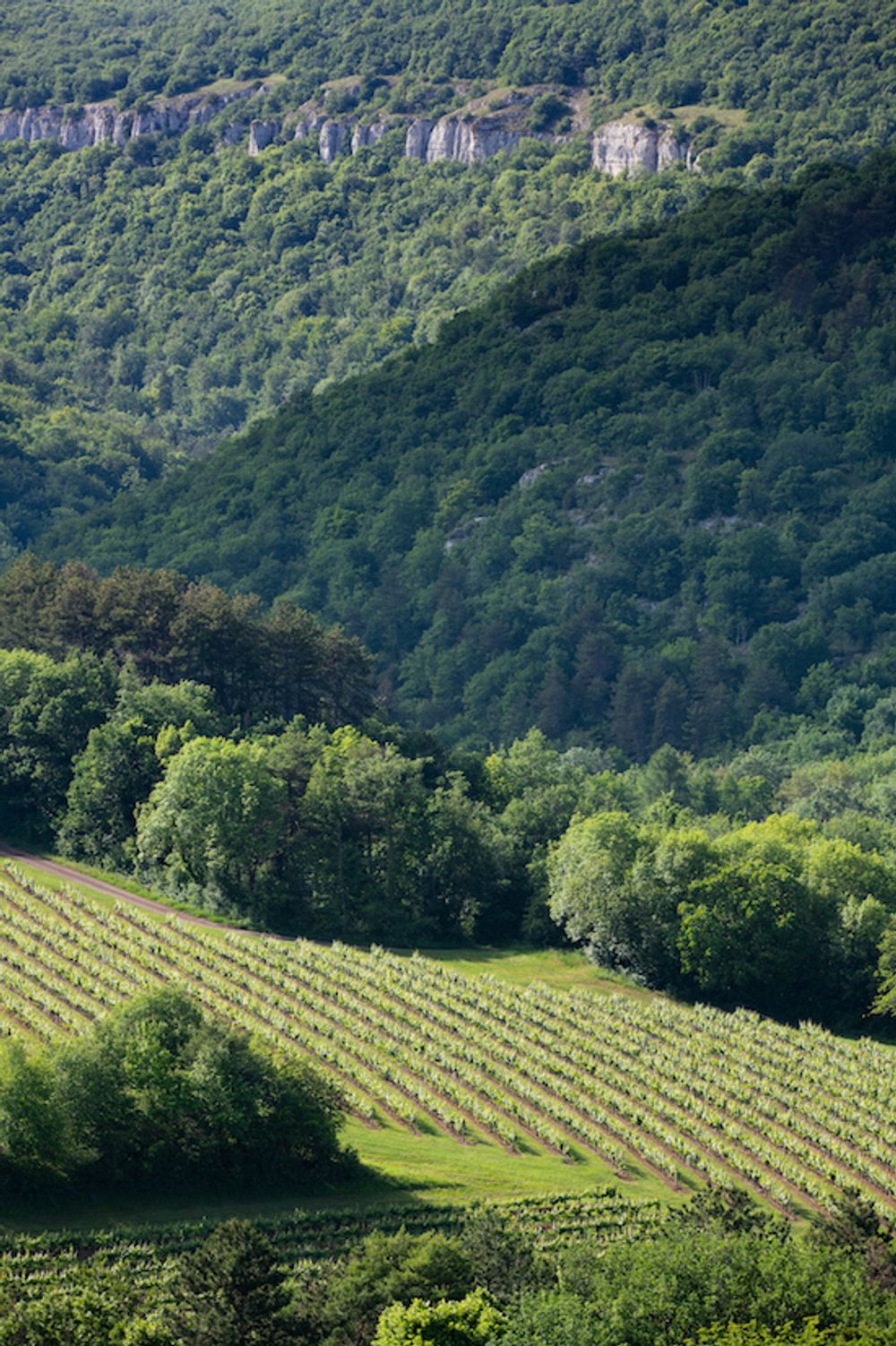Exports to the UK are up in volume and value in the first nine months of 2019. This, along with what producers are apparently calling a ‘once in a lifetime’ vintage in the new 2018 wines spells good news for the trade ahead of Bourgogne Week 2020.
The 2018 vintage is a cracker in terms of both quality and quantity, which will become apparent during Bourgogne Week 2020 that runs from January 7th-16th. The picking times were crucial in 2018 meaning that for those producers who timed it just right they got optimum ripeness and quantity, a boon after the good half dozen vintages preceding it where quality wasn’t the issue but rather the amount of wines produced.
So wine buyers have the perfect opportunity this year to buy in quantity across the appellations and quality levels.

Anne Moreau, London, December 2019
This week and next the focus falls firmly on Bourgogne wines and the launch of Bourgogne Week 2020 and the chance for the trade to join in with a series of key tastings and events, all backed up and supported by a promotional campaign from the BIVB.
Here Anne Moreau, Co-President of the communications commission for BIVB, explains why Bourgogne Week is so important to the region, but also looks to highlight the steps being taken to promote all areas of the region particularly the ‘in-between’ appellations – technically called Régionale appellations plus a geographical denomination – that can offer the keenest value for money.
Can you give your analysis for how Bourgogne has performed in the last 12 months?
If we look at numbers in the UK, in 2018we were a little bit down with 13.7m bottles exported for a value of €140m. White wines are massive in the UK – in 2018 it accounted for 80% of all wines exported to the UK. Given that in terms of production Chablis accounts for 36% of white wine in Bourgogne, when it has such a small crop it does have an influence on the overall figures.
I also think that there was a Brexit factor – uncertainty after the referendum – which is perhaps why figures went down.
For the first nine months of 2019, however, the figures were better with a growth of 7.9% in volume and a growth of 5.4% in value, so we are back on track and the two appellations that really helped the most were Chablis and Mâcon. These figures also indicate that it is the mid-range appellations that are doing well, not the most expensive.
How was the 2017 vintage received by the trade last year?
We have good growth in exports to the UK that shows that 2017 was very well received. 2017 was a good quality, classic vintage with higher volumes and we see it on the figures. As for prices, 2017 was pretty stable because we knew of 2018 coming afterwards,which was a relief.
How is availability with the 2018 vintage and what impact has that had on pricing?
2018 is very generous, a ‘double win’, an exceptional year in volume and quality, everything was perfect, good conditions, good harvest conditions, it was as if after three difficult vintages Mother Nature wanted to be nice to us again– she was giving us grapes; a lot of winemakers said it was a ‘once in a lifetime’ vintage.
In terms of quality, recent vintages have been good– 2017, 16, 15, 14,even 13, they were all good vintages but not so with quantity. 2018 was especially good because we filled up the cellars,but unfortunately volumes are back down again in 2019.
I have not heard of people putting their prices up in 2018, there may be a few producers but not as a whole. Some markets assumed because we had bigger volumes the prices would go down, and that’s a bit tricky to explain because prices do not go down just because we are back to a normal crop.
To give you some context: a good average crop is 1.5 million hectolitres. In 2018 we produced 1.8m but in 2019 we produced 1.2m – even less than we produced in 2016 – so I do not think that prices will drop in 2019.
Do you not think that people expect prices to be lowered when there is greater supply?
If you look over the past 10 years we are missing almost two harvests. In 2018 we were back with big volumes,but 2019 will be much lower – Mâcon for example they lost 40%, Chablis lost 15% of production.
When we came back with good volumes in 2018 people said ‘OK we want prices to be down’, but no it’s not the way it works because we never know what’s going to happen with the next vintage and of course because people have been working hard in the fields, investing in making the wines, facilities and everything, when you get good volumes you can’t expect the price to simply go down.

Chaintré – Crêche sur Saone: one of 27 Mâcon Régionale appellations plus a geographical denomination. ©Aurelien Ibanez
What are your main strategies for building exports in both established and new markets?
By teaching people through ambassadors in the market – we already have four ambassadors in the UK and we mean to increase the community in 2020 with new graduates. We will receive them in Bourgogne for a week, where they will attend classes and visit the domaines. Then they are asked to organise tastings in their own country. We have 74 Bourgogne Wines official ambassadors globally (with export we have 60 and 14 in France). These will already be educators and consultants for importers and restaurants.
It is the key I think to bring knowledge.
In the UK, for example, we have toured the country and visited every significant wine trade town in the past three years. We had 348 participants since 2017 – the key messages we wished to put forward were about these Régionale appellations plus a geographical denomination, how they relate to the terroir and also the quality-to-value-for-money ratio.
We want people to understand that Bourgogne is not just about Premier Cru and Grand Cru but also about Régionale and Village AOCs that are lesser-known and underrated, like Petit Chablis for example that has been regarded as a secondary label which is a pity because it is a wine that deserves to be highlighted.
New markets?
Australia. It is only 14thor 15thcountry in terms of exports but it is growing a lot. For example it has grown 22.5% in the first nine months of this year for volume and 13% per value (compared to the same period in 2018). It’s not a big market but it’s been on our radar for 3-5 years now and it’s progressing regularly now.
Négociants in Bourgogne, you see, also don’t want to put all their eggs in one basket. There are so many historical connections with other markets like the US, the UK, Canada and England and they remain loyal even if there’s more money to be made elsewhere.
How has the ‘Terroir & Territories’ initiative going? What are the next steps with that?
‘Terroir & Territories’ is like a charter between all the producers, BIVB, chamber of agriculture and the association Bio Bourgogne – guidelines on how to improve agriculture by using less chemical products.
At the moment, for example, we have 30 vineyard trials – testing new ways to make wine without chemicals. If something works we share the results so that all winegrowers can experiment in their own domain.
So far it is slowly but steady progress – because it is hard to change a mentality.
Tell us about Bourgogne Week 2020… what are the main objectives?
Apart from presenting the 2018 vintage, we do want to pass on the message that Bourgogne wines need not be expensive. You can find lesser-known appellations that are really delicious, with good value for money. For example, it is really important to dig into those Régionale appellations plus a geographical denomination.
‘Régionale appellations plus a geographical denomination’ – a bit of a mouthful?
I agree. We are currently looking at this because it is too long and unsexy – so maybe we will be calling them Régionale+, but this is work in progress.

Hautes Côtes de Nuits: one of 14 Bourgogne ‘Régionale appellations plus a geographical denomination’ © Michel Joly
Which offer the best value for money do you think?
It is hard to say which are the best value for money – there are so many of them: 27 Mâcon and 14 Bourgogne plus a geographical denomination. These are a little bit more than Régionale AOCs because there are stricter rules regarding where the fruit comes from, the yield and sugar levels. It is an in-between stage, if you will, towards a Village appellation.
The ones that offer best value for money? Bourgogne Week will decide that and it is down to the importers who are showing the wines. We are trying to find out which wines will be presented and ask them to promote more those wines.
It is important to stress here that we do not run Bourgogne Week as such, we market it and help facilitate it. We used to do our own tasting during the week but it became useless because the importers started to organise their own events which was a good thing. So it was at this point that we decided to support and promote under the name “Bourgogne Week”. We encourage the participants to share their discoveries with the hashtags #BourgogneWeek and #BourgognePassItOn
How is the trade responding and understanding the different quality and price levels within the Régionale AOCs plus a geographical denomination?
Bourgogne is developing all these lesser-known appellations and we are seeing a real difference in ratings. They are getting all kind of awards.
It is really important for people to get used to these appellations and see how interesting they are because the quality of the wines have really improved in the past 10 years and they really deserve to be highlighted.
For us, we are the ‘lucky’ ones in that we are the first to benefit from global warming… maturity is arriving every year. In the early 2000s, we were still talking about ‘chapitalisation’, this is something we haven’t heard about for 5-10 years now.
But the trade is happily surprised. I have been in Norway and Sweden recently working on the lesser-known appellations and at the end of the blind tasting people were thinking the wine was a Village or even a village, Premier Cru and not a Bourgogne or Mâcon plus wine – and the only way to do this is to get them to taste the wines. It is working, but it takes time. The feedback shows that people are so impressed with the quality and when we reveal the prices – €10-15 (ex-cellar) for the most expensive in France – people are impressed because this is still Chardonnay and Pinot Noir from Bourgogne we are talking about.
How are you intending to achieve your aims with these lesser-known appellations?
Through training, social media and ‘showing’ the wines to people. For example the BIVB has organised a training session dedicated to the importers and wholesalers last November to show them and explain the category. We ask them to push these appellations and we also ask our producers in Bourgogne to take any opportunity to present them to the trade, the consumers, etc.
It’s all about finding the right balance – the importers want to keep their hands on Bourgogne Week and we are there to support them and give advice on which areas we are strategically targeting; but then it’s up to them to do what they want to do.
We started working on Bourgogne Week 2020 in September and its success is evaluated largely on qualitative research looking at social media and look at how many wines have been discovered. We will also be in touch with producers to see how they feel it has gone.
Bourgogne Week runs from the 7th to the 16th of January 2020, for details of all the tastings taking place go to the Bourgogne Wines website by clicking here.
During the week check out @BourgogneWines on Twitter and @vinsdebourgogne on Instagram and look out for the the following hashtags #BourgogneWeek and #BourgognePassItOn that will be used to highlight top tips for wines to taste and buy.































